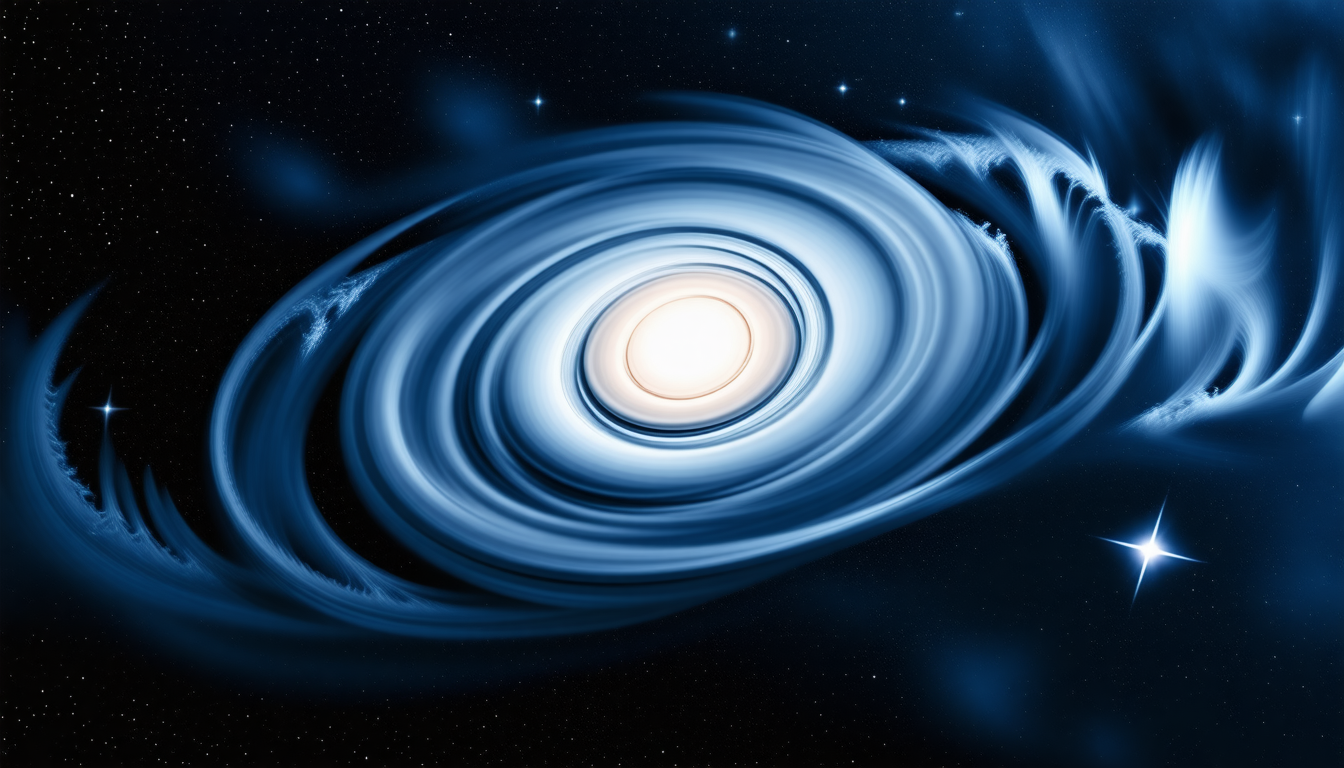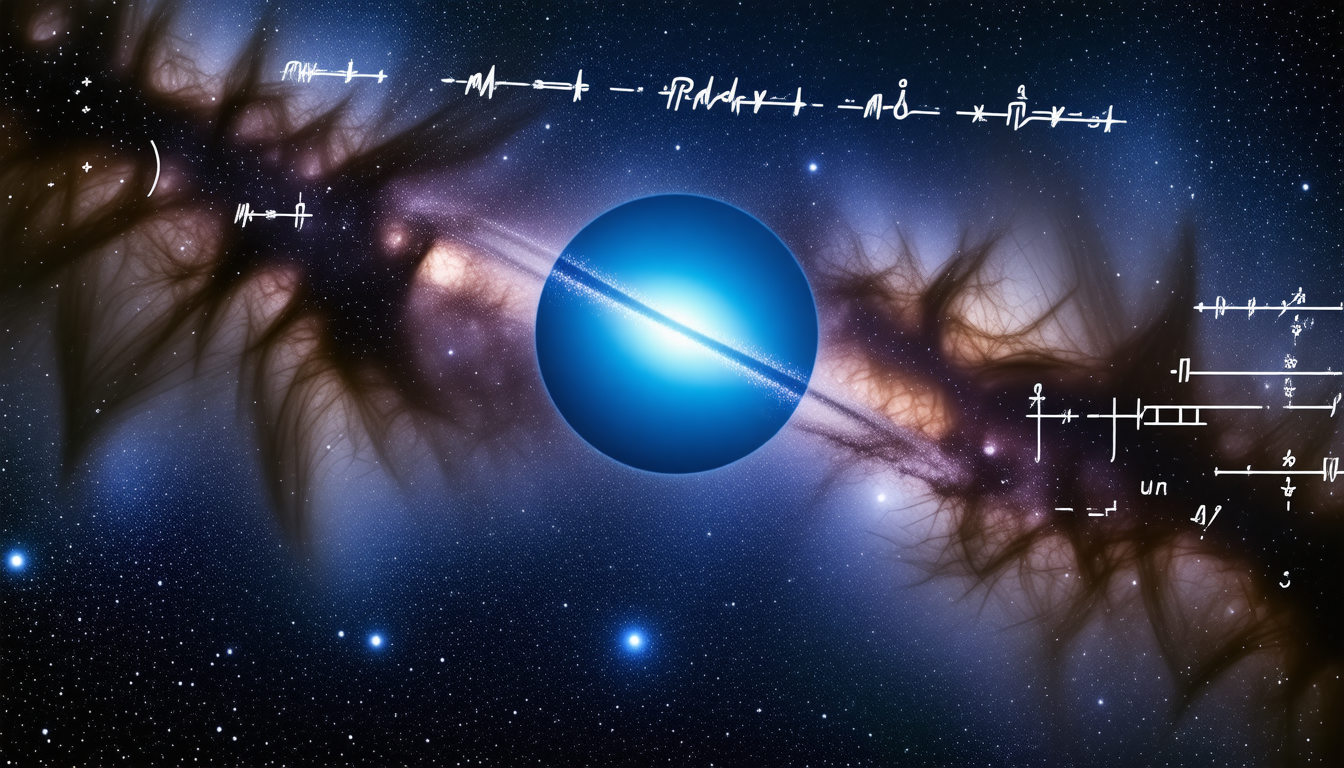The Cosmic Quest for Neptune and the Nature of Discovery

The Discovery of Neptune and Its Significance in Astronomy
In the annals of astronomical history, the quest for understanding our solar system took a monumental turn with the discovery of Neptune. This celestial event transcended mere observation; it was an intricate weave of mathematical prowess, theoretical insight, and perhaps a touch of cosmic serendipity. The discovery of Neptune not only expanded the boundaries of our solar system but also solidified the foundation of celestial mechanics in a manner that revolutionized our understanding of the heavens.
Before the discovery of Neptune, the solar system was known to comprise only seven planets. The first significant breakthrough came in 1781 when William Herschel discovered Uranus, a finding that shocked the astronomical community and shattered long-held beliefs about the confines of our planetary neighborhood. However, as scientists observed the peculiar motion of Uranus, it became apparent that its orbit was being disturbed by an unseen force, possibly the influence of another planet lurking beyond its orbit.
In the years that followed, astronomers like Johann Galle, Alexis Bouvard, and John Couch Adams dedicated their efforts to deciphering the enigma of Uranus’s erratic movement. They posited that there must be another planetary body exerting gravitational influence—an idea which set ablaze the imaginations of mathematicians and astronomers alike. The groundwork laid by Isaac Newton’s laws of motion and gravitation intermingled with sophisticated mathematical formulations, propelling the search for this hypothetical planet into high gear.
By the early 19th century, Bouvard’s calculations hinted at the existence of a new planet, but they were based on data that struggled to align with reality. It wasn’t until Adams and Le Verrier independently conducted their own analysis, employing Newtonian mechanics and mathematical extrapolation, that the scientific community began to rally behind the notion of an eighth planet.
- John Couch Adams, a young and determined mathematician from Cambridge, meticulously developed his calculations predicated on the gravitational disruptions caused by the unseen planet. Through relentless dedication and keen intellect, Adams unveiled predictions that suggested where this elusive body could be found.
- Urbain Le Verrier, working independently in France, engaged in similarly sophisticated reasoning and came to analogous conclusions regarding the eighth planet’s existence. His confidence propelled him to publish his findings, a move that would place him at the center of a historical storm.
In September 1846, the celestial pageant unfolded. Armed with Le Verrier’s calculations, the astronomer Johann Galle and his assistant Heinrich d’Arrest employed the powerful telescope at the Berlin Observatory, sweeping the night sky as specified by Le Verrier. Within a mere hour, the search bore fruit: the discovery of Neptune, located a mere one degree from where Le Verrier had predicted it would be. The excitement was palpable, a crescendo of anticipation meeting reality.
The implications of Neptune’s discovery were profound. It was a validation of Newtonian mechanics, a testament to the power of theoretical knowledge when combined with observational astronomy. For the first time, a planet was “discovered” not through pure observational error or exploration but through mathematical deduction—a feat that signaled the dawn of a new age in astronomy.
This pivotal moment revealed that the universe was larger and more complex than previously imagined. Astronomers were awakened to the reality that our solar system might hold additional celestial bodies waiting to be uncovered. This realization fired the imaginations of a generation of astronomers, who took to their telescopes with renewed vigor. The discovery also set a precedent for future searches of other worlds, exemplifying how mathematical calculations could direct observational science, and it planted seeds for the later exploration of more distant celestial phenomena.
Oddly, alongside this monumental discovery was an undercurrent of skepticism and conflict—political and personal rivalries emerged as the scientific community grappled with the implications of priority and discovery. The quest for Neptune was marred by debates on who should receive credit for the discovery, leading to contentious exchanges between British and French astronomers, notably Adams and Le Verrier.
Nonetheless, the emergence of Neptune heralded a seismic shift in how science understood the cosmos. With the legacy of realizing that mathematics could uncover the unknown, this pivotal discovery undoubtedly paved the way for the exploration of celestial mechanics and shaped the trajectory of astronomy for years to come. The discovery of Neptune was not merely about finding another planetary body; it was a defining moment that underscored the power of theory in the ever-expanding narrative of human understanding of our universe.

The Role of Hypothetical Planets: Vulcan and the Ninth Planet
The search for celestial bodies often reveals more than the stars themselves; it lays bare the fabric of scientific speculation that can shape entire fields of study. In this context, the narratives surrounding hypothetical planets – namely Vulcan and the elusive Ninth Planet – serve as a testament to the inherent human desire to fill gaps in our understanding of the universe. These hypotheses were born not from whimsical imagination but from rigorous inquiry into the mysteries of celestial mechanics and the gravitational interactions that govern planetary orbits.
The notion of Vulcan predated the revelation of Neptune, emerging amidst the complex interactions surrounding Mercury. Astronomers had long observed the peculiar motion of Mercury, particularly the precession of its perihelion, which could not be thoroughly explained by Newtonian mechanics alone. Urbain Le Verrier, before he ventured into the realm of Neptune, investigated this anomaly and proposed the existence of a small, hitherto unseen planet lying closer to the Sun than Mercury. This hypothetical planet, later dubbed “Vulcan,” was thought to account for the discrepancies observed in Mercury’s orbit.
Le Verrier’s hypothesis quickly gained traction among the scientific community. As details emerged, the potential for discovering Vulcan sparked a fervent search among astronomers who were eager to catch a glimpse of this elusive body traversing the sky. Enthusiastic amateurs and professional astronomers alike trained their telescopes toward the Sun’s glare during solar eclipses, hopeful that they might witness the planet in transit. Yet, despite numerous reports and tantalizing claims, Vulcan remained firmly in the context of speculation.
The zeal for finding Vulcan reached a fever pitch, culminating in a community-wide effort that blurred the lines between science and fervent belief. However, as time passed, the elusive planet was never confirmed, and skepticism grew. When Albert Einstein published his General Theory of Relativity in 1915, he offered an explanation for Mercury’s orbital anomalies that did not rely on the existence of Vulcan. Instead, Einstein demonstrated that the curvature of spacetime around massive bodies like the Sun could lead to the discrepancies observed by astronomers. This elegant solution marked a paradigm shift in how gravitational phenomena were understood and effectively rendered the Vulcan hypothesis obsolete.
The case of the Ninth Planet, often entwined with discussions of Uranus’s peculiar motion, emerged in the wake of Neptune’s discovery. While the scientific community showcased its triumph in locating Neptune using Le Verrier’s predictions, lingering questions about the influences on Uranus’s orbit persisted. Some astronomers, still intrigued by the possibilities of undiscovered bodies, speculated that additional planets might exist beyond Neptune, and their gravitational perturbations could have tangible effects on the orbits of Uranus and even Neptune. This led to the birth of the so-called “Planet X” hypothesis.
During the 20th century, the search for this hypothetical planet was invigorated by astronomers who believed they could pinpoint its location through intricate mathematical modeling. Prominent figures such as Percival Lowell invested significant time and resources into locating Planet X. Lowell’s vigorous pursuits of the unknown fueled the imaginations of astronomers, yet despite his fervent observations, the planet remained undiscovered.
With the passage of time and advancements in technology, particularly during the late 20th and early 21st centuries, the quest for a ninth planet took on new dimensions. The advent of telescopes equipped with advanced imaging technology led to discoveries that hinted at the existence of smaller bodies in the far reaches of our solar system. However, the prospect of a large, undiscovered planet lurking in the dark recesses of space fell somewhat flat as astronomers came to terms with our solar system’s layout. Observations have revealed many trans-Neptunian objects, demonstrating that Pluto and its neighbors did not signify a larger, unobserved mass influencing the orbits of their solar siblings.
This shifting landscape emphasizes that while hypothetical planets like Vulcan and the Ninth Planet catalyzed scientific inquiry and exploration, they also acted as harbingers of the complex interplay between observation and theory in astronomy. Science’s inherent uncertainty is part of its beauty and its power; the pursuit of these unseen worlds pushed astrological boundaries, leading to profound lessons in the nature of planetary dynamics and the universe itself.
Moreover, the saga of Vulcan and the Ninth Planet highlights how hypotheses, even when unfounded, can profoundly impact scientific discourse. They inspire rigorous inquiry, compel astronomers to refine their theories, and ultimately, lead to the recalibration of scientific understanding. The history tied to these celestial pursuits echoes through the halls of astronomy, serving not as deprecated tales of failure, but rather as testament to the undying human spirit of exploration and the relentless search for truth amid the cosmos’ vast wonder.

Impact on the Lives of Astronomers: Adams and Le Verrier
The introduction of Neptune into the astronomical lexicon marks not just the discovery of an eighth planet, but a critical chapter in the lives of two remarkable figures: John Couch Adams and Urbain Le Verrier. Each of them, representing the British and French scientific traditions respectively, bore the weight of their discoveries and navigated the tumultuous waters of fame, rivalry, and scientific responsibility in significantly different ways.
For Adams, the young mathematician from Cambridge, the quest for Neptune began with earnest enthusiasm and youthful ambition. His life dramatically shifted from quiet academic pursuits to the intense scrutiny of the international scientific community. Although he initially wrestled with the uncertainty of his findings, when the existence of Neptune was validated, Adams became a figure of great interest and celebration. He was hailed as one of the co-discoverers of the new planet, but the adulation also came with its burdens. The sense of national pride associated with this achievement positioned him as a symbolic figure during the height of British imperial ambitions. Yet, the very fame that accompanied his discovery also trapped him within an intricate web of expectations.
As accolades poured in, so too did the pressure to continue delivering groundbreaking work. His career thereafter became a litany of remarkable successes, but it was tinged with introspection regarding his initial adventures in calculating the planet’s position. The rivalry with Le Verrier overshadowed much of his collegiate achievements, leading to a sense of existential questioning about the nature of discovery itself: was it purely his ingenuity at work, or was there an element of serendipity woven into the fabric of his findings? Over the years, this question haunted Adams, as he meticulously continued his work at the Kemeebridge Observatory, focusing on the motions of the Moon and other astronomical phenomena, yet yielded to the shadow of his initial triumph as he sought to contribute meaningfully to the scientific discourse.
In stark contrast, the path of Urbain Le Verrier offered a tale of unyielding ambition but, paradoxically, a descent into a life marked by public and personal disputes. Following the sensational discovery of Neptune, Le Verrier quickly became synonymous with the achievement, eliciting both admiration and resentment. His initial triumph was transformative, propelling him into the role of a celebrated national hero in France. With the public acclaim came an influx of professional demands and expectations—he was thrust into the limelight of political power plays, embroiled in a narrative that emphasized national pride at the expense of scientific integrity. His outspoken nature and impenetrable self-confidence often led him to engage in fierce debates with peers, particularly regarding his interpretations of the external forces influencing the orbits of planets.
Le Verrier’s professional life thus became a dual-edged sword; while he enjoyed recognition, the sting of criticism was also persistent. As a director of the Paris Observatory, he faced opposition from his colleagues, notably from François Arago, who often criticized his methods and results. The contentious atmosphere surrounding their professional relationship ultimately affected the way Le Verrier steered institutional science, causing him to adopt more authoritarian measures in the observatory’s administrative operations. His management style shifted, often adopted in pursuit of efficiency at the cost of collaboration. This led to resentment among his peers, creating factions of astronomers who either fervently supported or vehemently opposed him.
The impact of Neptune’s discovery on both Adams and Le Verrier exposed the fragility of the scientific hero narrative; their stories became reflections of broader themes in exploration and discovery. While their mathematical gymnastics and determined ventures into the night sky exhibited pure brilliance, their legacies were tangled in professional rivalries and the very human instincts of pride and ownership. The dichotomy of their personalities and the contexts in which they operated painted a vivid picture of the scientific landscape of the 19th century, a world where individual achievement was celebrated but also bitterly contested.
Both astronomers ultimately reshaped the course of celestial mechanics and solidified their places in the annals of scientific history. Yet, their legacies serve as reminders that the path to discovery is often fraught with challenges and complexities far beyond the search for simple answers. The quest for Neptune illuminated the scientific process in all its glory, whilst highlighting the indelible human element intricately woven into the fabric of discovery—complete with its rivalries, triumphs, and, ultimately, a quest for understanding that persists to this day. The legacies of Adams and Le Verrier remain emblematic of the intricate dance between scientific reasoning and human emotion, forever entwined in the great narrative of our journey through the cosmos.